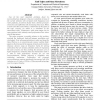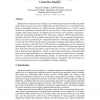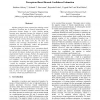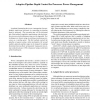661 search results - page 3 / 133 » Increasing Processor Performance by Implementing Deeper Pipe... |
ISCA
2005
IEEE
14 years 28 days ago
2005
IEEE
One of the most important problems faced by microarchitecture designers is the poor scalability of some of the current solutions with increased clock frequencies and wider pipelin...
ARVLSI
1999
IEEE
13 years 11 months ago
1999
IEEE
Application-specific processor design is a promising approach for meeting the performance and cost goals of a system. Application-specific processors are especially promising for ...
HPCA
2004
IEEE
14 years 7 months ago
2004
IEEE
Pipeline gating has been proposed for reducing wasted speculative execution due to branch mispredictions. As processors become deeper or wider, pipeline gating becomes more import...
ICCD
2002
IEEE
14 years 4 months ago
2002
IEEE
A method of managing the power consumption of an embedded, single-issue processor by controlling its pipeline depth is proposed. The execution time will be increased but, if the m...
DSN
2004
IEEE
13 years 11 months ago
2004
IEEE
The progression of implementation technologies into the sub-100 nanometer lithographies renew the importance of understanding and protecting against single-event upsets in digital...




